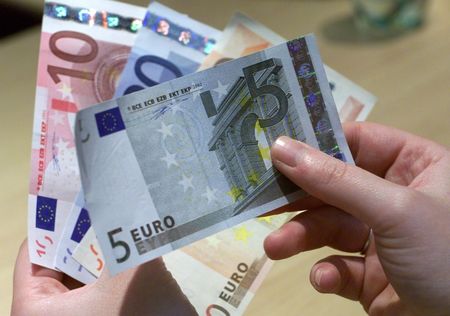Forex
EUR/USD ‘survives’ the ECB test: ING

The pair showed resilience in the face of the European Central Bank (ECB) event risk, maintaining stability despite ECB President Christine Lagarde not adopting an extremely dovish stance. The euro experienced a slight dip at the end of the trading session, but the currency pair continued to hover around the 1.05 mark.
Analysts from ING observed that the direction for eurozone interest rates is trending downward, with expectations that rates could surpass the neutral threshold of 2.00/2.25%.
The recent widening of the Italian:German sovereign bond spread was seen more as a result of profit-taking and position adjustments rather than a reaction to the ECB’s awareness of the potential eurozone economic slowdown.
The spread had previously been unusually narrow, suggesting the current movement is not indicative of a larger concern about the ECB’s monetary policy direction.
The EUR/USD pair is expected to remain close to the 1.05 level for the day. Market participants are looking ahead to next Wednesday’s Federal Open Market Committee (FOMC) meeting, which is anticipated to be the next significant event influencing the dollar.
Those holding short positions in EUR/USD are predicted to maintain their stance, as it is considered a carry-positive position. The short-term trading range is projected to be between 1.0450 and 1.0550.
In Switzerland, the Swiss National Bank (SNB) opted for a more assertive 50 basis point rate cut. Martin Schlegel, the new President of the SNB, expressed a dislike for negative interest rates but acknowledged the bank’s willingness to implement them if necessary.
Although not fully convinced of a negative rate scenario for the SNB next year, ING maintains that the SNB will likely not cut rates as deeply as the ECB, predicting a downward trend for the pair.
This article was generated with the support of AI and reviewed by an editor. For more information see our T&C.

 Forex3 years ago
Forex3 years agoForex Today: the dollar is gaining strength amid gloomy sentiment at the start of the Fed’s week

 Forex3 years ago
Forex3 years agoUnbiased review of Pocket Option broker

 Forex3 years ago
Forex3 years agoDollar to pound sterling exchange rate today: Pound plummeted to its lowest since 1985

 Forex3 years ago
Forex3 years agoHow is the Australian dollar doing today?

 Cryptocurrency3 years ago
Cryptocurrency3 years agoWhat happened in the crypto market – current events today

 World3 years ago
World3 years agoWhy are modern video games an art form?

 Commodities3 years ago
Commodities3 years agoCopper continues to fall in price on expectations of lower demand in China

 Economy3 years ago
Economy3 years agoCrude oil tankers double in price due to EU anti-Russian sanctions























